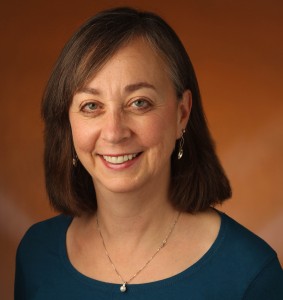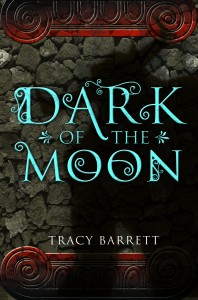 Another in our series of introductions of new contributors to Wonders & Marvels: introducing Tracy Barrett, award-winning author of books for young readers, both fiction and non-fiction. Lately she has been concentrating on young-adult fiction set in the ancient Mediterranean.
Another in our series of introductions of new contributors to Wonders & Marvels: introducing Tracy Barrett, award-winning author of books for young readers, both fiction and non-fiction. Lately she has been concentrating on young-adult fiction set in the ancient Mediterranean.
Q: You have an A.B. in Classics from Brown University and a Ph.D. in Medieval Italian literature from U.C. Berkeley, you teach Italian at Vanderbilt University, and you’re also an award-winning author. Could you tell us a little bit about your career trajectory? How have these two seemingly different lives intersected?
A: Actually, there are many similarities! My favorite activity is poking around dusty old books that nobody else has looked at since 1951, finding an intriguing fact that makes the past come alive, and communicating that fact to a receptive audience. That’s what I did when I investigated the medieval poet Cecco Angiolieri for my dissertation, and that’s what I do now when I find out something about Bronze Age Crete to round out a character in a novel.
Q: Of the many books you’ve written, which one has been the most interesting to write?
A: Like most authors, I usually find my most recent book the most interesting, so for me, that would be Dark of the Moon, releasing—ta-da!—tomorrow! It’s a retelling of the myth of the Minotaur, which is itself a Greek retelling (or misunderstanding) of now-lost Cretan rituals, most likely concerning the worship of a bull-god, whose priest might have worn a bull costume during rituals. It’s possible that Greek travelers garbled the story and came up with the marvelous tale of the Minotaur, a half-man, half-bull who devoured human children. Their inaccurate but exciting retelling gave the world one of its most popular myths.
In my imagined Minoan civilization, Crete is ruled by a moon goddess and Asterion is no monster, but a deformed and nearly mindless man who has to be confined under the palace for his own and others’ safety. Everyone is terrified of him except his beloved sister Ariadne, and eventually, Prince Theseus of Athens, who has been sent to kill him.
Told in alternating points of view by Ariadne, a lonely teenager who is also priestess of the moon, and Theseus, who has rediscovered his father only to be sent by him to almost certain death, Dark of the Moon explores the issues of love, faith, and betrayal. Ariadne must decide what her obligations are toward her heritage and her religion. Theseus must discover how much he owes his absent father, his neglectful mother, and his kind stepfather. It’s been getting some great reviews, including a star from Kirkus Reviews.
I’d love to share the book with you! I’ll send signed (or unsigned, if you prefer) copies to two people who comment on this post over the next week.
Q: You’re “retiring” from Vanderbilt at the end of this year to focus on your fiction writing. How will you start transitioning to life as a full-time teacher to life as a full-time writer?
A: I’m weaning myself from teaching and amping up my writing while not shortchanging my students and colleagues at Vanderbilt, which means that I’m working at one or the other job pretty much all the time. Life will be difficult for the next seven months, but I care a lot about both teaching and writing too much to want to do less than my best at either one.
I’m blogging about my last year at Vanderbilt at Goodbye, Day Job!. Guest posts alternate with my own posts about preparing to leave a “regular” job with a paycheck, benefits, social contacts, and interesting coworkers (I’m including my students in that group!) for the uncertain world of working for myself. A new post every Wednesday!
Q: I know that you’re deeply connected to the YA writer community. What are the benefits of engaging with author writers? And what’s the best way for a new author to reach out to others?
A: You’re asking this at a very good time. I just spent the weekend at the annual conference of the Midsouth (Tennessee/Kentucky) chapter of the Society of Children’s Book Writers and Illustrators, a 22,000-member international organization. As always, the conference was stimulating and educational, but above all a wonderful networking opportunity. Children’s writers are the most generous and interesting people I’ve ever met, and I’m thrilled that I’ll be able to spend more time with them. You don’t have to be published to join, so if this is something that interests you, I highly recommend that you join.
Q: Inquiring minds want to know. What do you have in the works? What can we look forward to?
A: I’m working on a YA manuscript set in the Roman Empire. It’s still too new and fragile to talk about, but it involves an Etruscan slave girl, a mysterious prophecy, a guilty secret, murder, love, teen angst—I’ll share more when I think it’s sturdy enough to bear a little scrutiny without bruising!
I look forward to posting here on the 20th of every month on all aspects of young-adult historical fiction.

